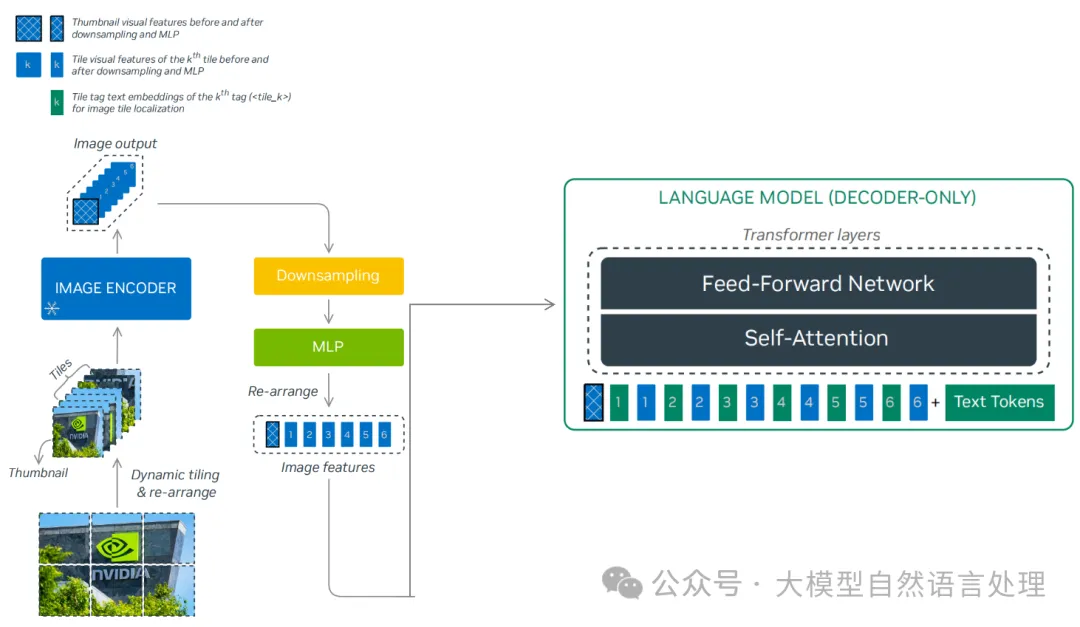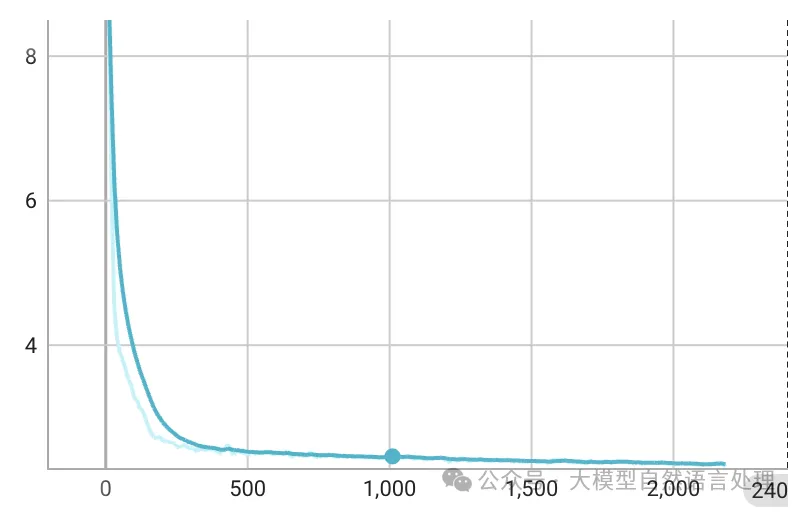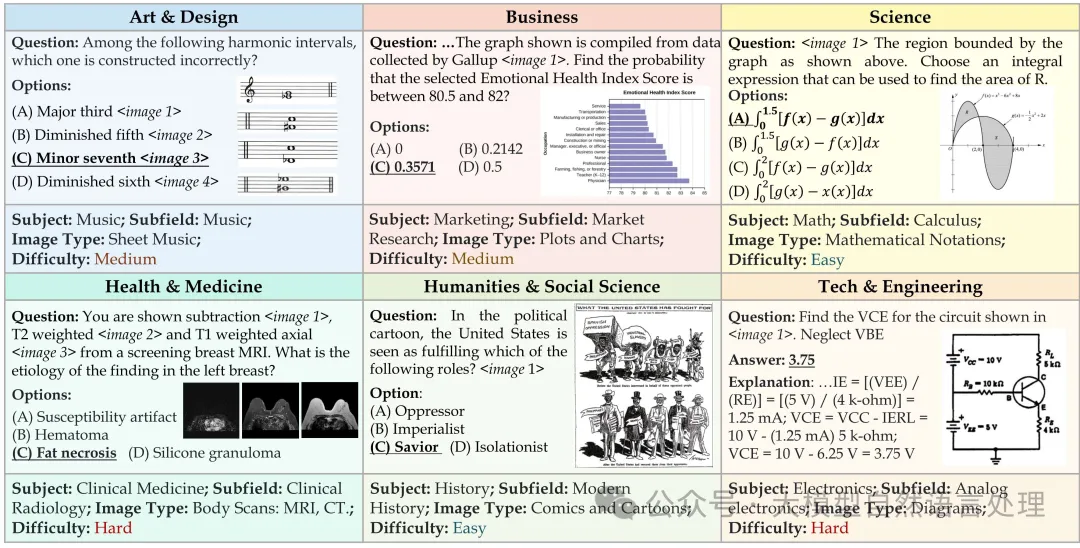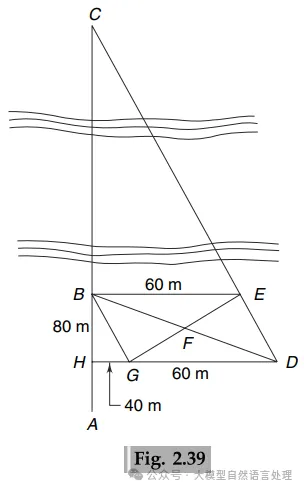Reyes:一个从0到1开始训练的多模态大模型(技术报告) 原创
最近,笔者系统的看了下一些比较经典的多模态大模型实现思路,本着动手实践的态度,从零到一实现了一个多模态大模型,并命名为Reyes(睿视),R:睿,eyes:眼。Reyes的参数量为8B,视觉编码器使用的是InternViT-300M-448px-V2_5,语言模型侧使用的是Qwen2.5-7B-Instruct,与NVLM-1.0等相关多模态大模型一样,Reyes也通过一个两层MLP投影层连接视觉编码器与语言模型。最终,Reyes-8B(0.447分)以更小的参数量在MMMU-benchmark得分超越llava1.5-13B(0.367分)。
- 模型权重开源地址:https://modelscope.cn/models/yujunhuinlp/Reyes-8B
- github:https://github.com/yujunhuics/Reyes

Reyes模型大体架构
Reyes模型架构
- 视觉编码器:InternViT-300M-448px-V2_5(https://modelscope.cn/models/OpenGVLab/InternViT-300M-448px-V2_5)
- LLM侧:Qwen2.5-7B-Instruct(https://modelscope.cn/models/Qwen/Qwen2.5-7B-Instruct)
模型实现:ReyesModel
class ReyesModel(PreTrainedModel):
config_class = ReyesConfig
main_input_name = 'pixel_values'
_supports_flash_attn_2 = True
_no_split_modules = ['InternVisionModel', 'Qwen2DecoderLayer']
def __init__(self, config: ReyesConfig, vision_model=None, language_model=None, use_flash_attn=True):
super().__init__(config)
assert version_cmp(transformers.__version__, '4.44.2', 'ge')
image_size = config.force_image_size or config.vision_config.image_size
patch_size = config.vision_config.patch_size
self.patch_size = patch_size
self.select_layer = config.select_layer
self.llm_arch_name = config.llm_config.architectures[0]
self.template = config.template
self.num_image_token = int((image_size // patch_size) ** 2 * (config.downsample_ratio ** 2))
self.downsample_ratio = config.downsample_ratio
self.ps_version = config.ps_version
use_flash_attn = use_flash_attn if has_flash_attn elseFalse
config.vision_config.use_flash_attn = Trueif use_flash_attn elseFalse
config.llm_config._attn_implementation = 'flash_attention_2'if use_flash_attn else'eager'
logger.info(f'num_image_token: {self.num_image_token}')
logger.info(f'ps_version: {self.ps_version}')
if vision_model isnotNone:
self.vision_model = vision_model
else:
self.vision_model = InternVisionModel(config.vision_config)
if language_model isnotNone:
self.language_model = language_model
else:
if config.llm_config.architectures[0] == 'Qwen2ForCausalLM':
self.language_model = Qwen2ForCausalLM(config.llm_config)
# self.language_model = AutoLigerKernelForCausalLM(config.llm_config)
else:
raise NotImplementedError(f'{config.llm_config.architectures[0]} is not implemented.')
vit_hidden_size = config.vision_config.hidden_size
llm_intermediate_size = config.llm_config.intermediate_size
llm_hidden_size = config.llm_config.hidden_size
self.mlp1 = nn.Sequential(
nn.LayerNorm(vit_hidden_size * int(1 / self.downsample_ratio) ** 2),
nn.Linear(vit_hidden_size * int(1 / self.downsample_ratio) ** 2, llm_intermediate_size, bias=False),
nn.GELU(),
nn.Linear(llm_intermediate_size, llm_hidden_size, bias=False)
)
self.img_context_token_id = None
self.conv_template = get_conv_template(self.template)
self.system_message = self.conv_template.system_message
if config.use_backbone_lora:
self.wrap_backbone_lora(r=config.use_backbone_lora, lora_alpha=2 * config.use_backbone_lora)
if config.use_llm_lora:
self.wrap_llm_lora(r=config.use_llm_lora, lora_alpha=2 * config.use_llm_lora)
def wrap_backbone_lora(self, r=128, lora_alpha=256, lora_dropout=0.05):
lora_config = LoraConfig(
r=r,
target_modules=['attn.qkv', 'attn.proj', 'mlp.fc1', 'mlp.fc2'],
lora_alpha=lora_alpha,
lora_dropout=lora_dropout,
)
self.vision_model = get_peft_model(self.vision_model, lora_config)
self.vision_model.print_trainable_parameters()
def wrap_llm_lora(self, r=128, lora_alpha=256, lora_dropout=0.05):
# Determine the target modules based on the architecture of the language model
if self.llm_arch_name in ['Qwen2ForCausalLM', 'LlamaForCausalLM']:
target_modules = ['self_attn.q_proj', 'self_attn.k_proj', 'self_attn.v_proj', 'self_attn.o_proj',
'mlp.gate_proj', 'mlp.down_proj', 'mlp.up_proj']
else:
raiseNotImplemented
lora_config = LoraConfig(
r=r,
target_modules=target_modules,
lora_alpha=lora_alpha,
lora_dropout=lora_dropout,
task_type='CAUSAL_LM'
)
self.language_model = get_peft_model(self.language_model, lora_config)
self.language_model.enable_input_require_grads()
self.language_model.print_trainable_parameters()
def forward(
self,
pixel_values: torch.FloatTensor,
input_ids: torch.LongTensor = None,
attention_mask: Optional[torch.Tensor] = None,
position_ids: Optional[torch.LongTensor] = None,
image_flags: Optional[torch.LongTensor] = None,
past_key_values: Optional[List[torch.FloatTensor]] = None,
labels: Optional[torch.LongTensor] = None,
use_cache: Optional[bool] = None,
output_attentions: Optional[bool] = None,
output_hidden_states: Optional[bool] = None,
return_dict: Optional[bool] = None,
) -> Union[Tuple, CausalLMOutputWithPast]:
return_dict = return_dict if return_dict isnotNoneelse self.config.use_return_dict
# image_flags = image_flags.squeeze(-1)
input_embeds = self.language_model.get_input_embeddings()(input_ids)
vit_embeds = self.extract_feature(pixel_values)
# vit_embeds = vit_embeds[image_flags == 1]
vit_batch_size = pixel_values.shape[0]
B, N, C = input_embeds.shape
input_embeds = input_embeds.reshape(B * N, C)
# if torch.distributed.get_rank() == 0:
# print(f'dynamic ViT batch size: {vit_batch_size}, images per sample: {vit_batch_size / B}, dynamic token length: {N}')
input_ids = input_ids.reshape(B * N)
selected = (input_ids == self.img_context_token_id)
try:
input_embeds[selected] = input_embeds[selected] * 0.0 + vit_embeds.reshape(-1, C)
except Exception as e:
vit_embeds = vit_embeds.reshape(-1, C)
print(f'warning: {e}, input_embeds[selected].shape={input_embeds[selected].shape}, '
f'vit_embeds.shape={vit_embeds.shape}')
n_token = selected.sum()
input_embeds[selected] = input_embeds[selected] * 0.0 + vit_embeds[:n_token]
input_embeds = input_embeds.reshape(B, N, C)
outputs = self.language_model(
inputs_embeds=input_embeds,
attention_mask=attention_mask,
position_ids=position_ids,
past_key_values=past_key_values,
use_cache=use_cache,
output_attentinotallow=output_attentions,
output_hidden_states=output_hidden_states,
return_dict=return_dict,
)
logits = outputs.logits
loss = None
if labels isnotNone:
# Shift so that tokens < n predict n
shift_logits = logits[..., :-1, :].contiguous()
shift_labels = labels[..., 1:].contiguous()
# Flatten the tokens
loss_fct = CrossEntropyLoss()
shift_logits = shift_logits.view(-1, self.language_model.config.vocab_size)
shift_labels = shift_labels.view(-1)
# Enable model parallelism
shift_labels = shift_labels.to(shift_logits.device)
loss = loss_fct(shift_logits, shift_labels)
ifnot return_dict:
output = (logits,) + outputs[1:]
return (loss,) + output if loss isnotNoneelse output
return CausalLMOutputWithPast(
loss=loss,
logits=logits,
past_key_values=outputs.past_key_values,
hidden_states=outputs.hidden_states,
attentinotallow=outputs.attentions,
)数据引擎
- 预训练数据(558k):https://huggingface.co/datasets/liuhaotian/LLaVA-Pretrain
- SFT数据(665k,其实笔者没使用这么多,大概使用了430K左右):https://huggingface.co/datasets/liuhaotian/LLaVA-Instruct-150K/blob/main/llava_v1_5_mix665k.json
图片放置方式:
├── coco
│ └── train2017
├── gqa
│ └── images
├── ocr_vqa
│ └── images
├── textvqa
│ └── train_images
└── vg
├── VG_100K
└── VG_100K_2数据格式
- 预训练数据格式:
<Image><image></Image> Give a brief description of the image. A group of airplanes flying through the sky.<|im_end|>- SFT数据格式(chatml格式)
<|im_start|>system
Follow the user's instruction and answer questions.<|im_end|>
<|im_start|>user
<Image><image></lmage>
What activity are the people engaged in on the green field?<|im_end|>
<|im_start|>assistant
The people are engaged in playing a game of frisbee on the lush green field.<|im_end|>
<|im_start|>user
Is there a person wearing a fairy outfit in the image? If so, what are they doing?<|im_end|>
<|im_start|>assistant
Yes, there is a person wearing a fairy outfit in the image. They are walking in the field, likely
participating in the fun activities along with the other people.<|im_end|>
<|im_start|>user
What can you say about the spectator's location in relation to the houses?<|im_end|>
<|im_start|>assistant
The spectators are watching a match being played in a location close to the houses, possibly indicating that the field is within a residential area or park.<|im_end|>动态高分辨率
在数据处理阶段,采用动态高分辨率(DHR)方法来处理不同分辨率的图像输入。具体的如下图,图像被分割成最多6个瓦片(tile):


上述两张图都是动态DHR的处理过程,围绕图像的预处理,包括归一化、缩放、裁剪、根据宽高比动态处理等操作,构建了一套完整的流程,代码逻辑如下:
import torch
from PIL import Image
import torchvision.transforms as T
from torchvision.transforms.functional import InterpolationMode
IMAGENET_MEAN = (0.485, 0.456, 0.406)
IMAGENET_STD = (0.229, 0.224, 0.225)
def build_transform(input_size):
MEAN, STD = IMAGENET_MEAN, IMAGENET_STD
transform = T.Compose([
T.Lambda(lambda img: img.convert('RGB') if img.mode != 'RGB'else img),
T.Resize((input_size, input_size), interpolatinotallow=InterpolationMode.BICUBIC),
T.ToTensor(),
T.Normalize(mean=MEAN, std=STD)
])
return transform
def find_closest_aspect_ratio(aspect_ratio, target_ratios, width, height, image_size):
best_ratio_diff = float('inf')
best_ratio = (1, 1)
area = width * height
for ratio in target_ratios:
target_aspect_ratio = ratio[0] / ratio[1]
ratio_diff = abs(aspect_ratio - target_aspect_ratio)
if ratio_diff < best_ratio_diff:
best_ratio_diff = ratio_diff
best_ratio = ratio
elif ratio_diff == best_ratio_diff:
if area > 0.5 * image_size * image_size * ratio[0] * ratio[1]:
best_ratio = ratio
return best_ratio
def dynamic_preprocess(image, min_num=1, max_num=6, image_size=448, use_thumbnail=True):
orig_width, orig_height = image.size
aspect_ratio = orig_width / orig_height
target_ratios = set(
(i, j) for n in range(min_num, max_num + 1) for i in range(1, n + 1) for j in range(1, n + 1) if
i * j <= max_num and i * j >= min_num)
target_ratios = sorted(target_ratios, key=lambda x: x[0] * x[1])
target_aspect_ratio = find_closest_aspect_ratio(
aspect_ratio, target_ratios, orig_width, orig_height, image_size)
target_width = image_size * target_aspect_ratio[0]
target_height = image_size * target_aspect_ratio[1]
blocks = target_aspect_ratio[0] * target_aspect_ratio[1]
resized_img = image.resize((target_width, target_height))
processed_images = []
for i in range(blocks):
box = (
(i % (target_width // image_size)) * image_size,
(i // (target_width // image_size)) * image_size,
((i % (target_width // image_size)) + 1) * image_size,
((i // (target_width // image_size)) + 1) * image_size
)
split_img = resized_img.crop(box)
processed_images.append(split_img)
assert len(processed_images) == blocks
if use_thumbnail and len(processed_images) != 1:
thumbnail_img = image.resize((image_size, image_size))
processed_images.append(thumbnail_img)
return processed_images
def load_image(image_file, input_size=448, max_num=6):
image = Image.open(image_file).convert('RGB')
transform = build_transform(input_size=input_size)
images = dynamic_preprocess(image, image_size=input_size, use_thumbnail=True, max_num=max_num)
pixel_values = [transform(image) for image in images]
pixel_values = torch.stack(pixel_values)
return pixel_valuesloss效果
- 预训练loss

预训练loss,epoch=1
- SFT loss

SFT loss,epoch=1
训练配置
为了与llava1.5-13B公平对比,笔者在训练数据上和一些训练参数上进行了对齐。
- pretrain阶段:冻结视觉侧和LLM侧,只训练MLP对齐,max-len=2048,gradient_accumulation_steps=4,单卡batch-size=8,8xH100,所有batch-size=8x4x8=256。
- SFT阶段:继续保持视觉侧冻结,放开LLM,与MLP一起训练,max-len=2048,gradient_accumulation_steps=2,单卡batch-size=8,8xH100,所有batch-size=8x2x8=128。
推理
import torch
from modelscope import AutoTokenizer, AutoModel
from PIL import Image
import torchvision.transforms as T
from torchvision.transforms.functional import InterpolationMode
IMAGENET_MEAN = (0.485, 0.456, 0.406)
IMAGENET_STD = (0.229, 0.224, 0.225)
def build_transform(input_size):
MEAN, STD = IMAGENET_MEAN, IMAGENET_STD
transform = T.Compose([
T.Lambda(lambda img: img.convert('RGB') if img.mode != 'RGB'else img),
T.Resize((input_size, input_size), interpolatinotallow=InterpolationMode.BICUBIC),
T.ToTensor(),
T.Normalize(mean=MEAN, std=STD)
])
return transform
def find_closest_aspect_ratio(aspect_ratio, target_ratios, width, height, image_size):
best_ratio_diff = float('inf')
best_ratio = (1, 1)
area = width * height
for ratio in target_ratios:
target_aspect_ratio = ratio[0] / ratio[1]
ratio_diff = abs(aspect_ratio - target_aspect_ratio)
if ratio_diff < best_ratio_diff:
best_ratio_diff = ratio_diff
best_ratio = ratio
elif ratio_diff == best_ratio_diff:
if area > 0.5 * image_size * image_size * ratio[0] * ratio[1]:
best_ratio = ratio
return best_ratio
def dynamic_preprocess(image, min_num=1, max_num=12, image_size=448, use_thumbnail=False):
orig_width, orig_height = image.size
aspect_ratio = orig_width / orig_height
# calculate the existing image aspect ratio
target_ratios = set(
(i, j) for n in range(min_num, max_num + 1) for i in range(1, n + 1) for j in range(1, n + 1) if
i * j <= max_num and i * j >= min_num)
target_ratios = sorted(target_ratios, key=lambda x: x[0] * x[1])
# find the closest aspect ratio to the target
target_aspect_ratio = find_closest_aspect_ratio(
aspect_ratio, target_ratios, orig_width, orig_height, image_size)
# calculate the target width and height
target_width = image_size * target_aspect_ratio[0]
target_height = image_size * target_aspect_ratio[1]
blocks = target_aspect_ratio[0] * target_aspect_ratio[1]
# resize the image
resized_img = image.resize((target_width, target_height))
processed_images = []
for i in range(blocks):
box = (
(i % (target_width // image_size)) * image_size,
(i // (target_width // image_size)) * image_size,
((i % (target_width // image_size)) + 1) * image_size,
((i // (target_width // image_size)) + 1) * image_size
)
# split the image
split_img = resized_img.crop(box)
processed_images.append(split_img)
assert len(processed_images) == blocks
if use_thumbnail and len(processed_images) != 1:
thumbnail_img = image.resize((image_size, image_size))
processed_images.append(thumbnail_img)
return processed_images
def load_image(image_file, input_size=448, max_num=12):
image = Image.open(image_file).convert('RGB')
transform = build_transform(input_size=input_size)
images = dynamic_preprocess(image, image_size=input_size, use_thumbnail=True, max_num=max_num)
pixel_values = [transform(image) for image in images]
pixel_values = torch.stack(pixel_values)
return pixel_values
def preprocess_image(file_path, dynamic=True, max_num=6, image_size=448):
try:
if dynamic:
return load_image(file_path, max_num=max_num).to(torch.bfloat16).cuda()
else:
img = Image.open(file_path).convert('RGB')
transform = build_transform(image_size)
pixel_values = transform(img)
return torch.stack([pixel_values]).to(torch.bfloat16).cuda()
except Exception as e:
raise RuntimeError(f"Error processing image: {e}")
path = "Reyes-8B"
model = AutoModel.from_pretrained(
path,
torch_dtype=torch.bfloat16,
trust_remote_code=True,
).eval().cuda()
# print(model)
tokenizer = AutoTokenizer.from_pretrained(path, trust_remote_code=True, use_fast=False)
generation_config = dict(max_new_tokens=2048, do_sample=False)
# single-image single-round conversation
file_path = 'tmp.png'
pixel_values = preprocess_image(file_path, dynamic=True)
question = '<image>\nPlease describe the image shortly.'
response = model.chat(tokenizer, pixel_values, question, generation_config)
print(f'User: {question}\nAssistant: {response}')
# pure-text conversation
question = 'Hello, who are you?'
response, history = model.chat(tokenizer, None, question, generation_config, history=None, return_history=True)
print(f'User: {question}\nAssistant: {response}')评测
1.MMMU评测(MMMU: A Massive Multi-discipline Multimodal Understanding and Reasoning Benchmark for Expert AGI)
简介:MMMU 是一种新的基准,旨在评估多模态模型在需要大学水平的学科知识和深思熟虑的推理的大规模多学科任务中的表现。MMMU 包含11.5K 个精心收集的来自大学考试、测验和教科书的多模态问题,涵盖六个核心学科:艺术与设计、商业、科学、健康与医学、人文与社会科学以及技术与工程。这些问题涵盖30 个学科和183 个子领域,包含32 种高度异构的图像类型,如图表、图解、地图、表格、乐谱和化学结构。与现有基准不同,MMMU 专注于使用领域特定知识进行高级感知和推理,挑战模型执行类似于专家面临的任务。

评测结果显示:Reyes-8b比llava1.5-13b取得了更先进的结果。详细评分如下:
- llava1.5-13b得分:0.367

- Reyes-8b得分:0.447

2.一些测试case
- case1

问题: Who painted <image 1>?
选项: {'A':'Claude Monet', 'B':'Henri Matisse', 'C':'Andy Warhol','D': "Georgia O'Keefe"]
预测的答案: C
正确的答案: C- case2

问题: Each situation below relates to an independent company's Owners' Equity. <image 1> Calculate the missing values of company 2.
选项: {'A': '$1,620', 'B': '$12,000', 'C': '$51,180', 'D': '$0'}
预测的答案: D
正确的答案: D- case3

问题: A survey line ABC crossing a river at right angles cut its banks at B and C, as shown in Fig. 2.39. To determine the width BC of the river, the following operation was carried out.A 60 m long line BE was set out roughly parallel to the river. Line CE was extended to D and mid-point F of DB was established. Then EF was extended to G such that FG = EF. Line DG was extended to cut the survey line ABC at H. GH and HB were measured and found to be 40 m and 80 m, respectively.Find the width of the river.<image 1>
选项: {'A': '120 m', 'B': '122 m', 'C': '123 m', 'D': '121 m'}
预测的答案: A
正确的答案: A总结
本文记录了从0到1实现一个多模态大模型的过程,包括模型结构、数据引擎、评测全流程。当前模型训练数据与llava1.5-13b对齐,并且在MMMU评测上以更小的模型参数量超越了llava1.5-13b,当前训练数据因为只采用了图文多模态数据,在SFT阶段,并未加入text-only数据,因此,语言模型端会出现一些退化。将来若有时间,会考虑加入更多的多模态数据及笔者私有数据进行训练(如:《【多模态 & 文档智能】一次多模态大模型表格识别解析探索小实践记录》),打造更强的Reyes模型。
本文转载自公众号大模型自然语言处理 作者:余俊晖

















